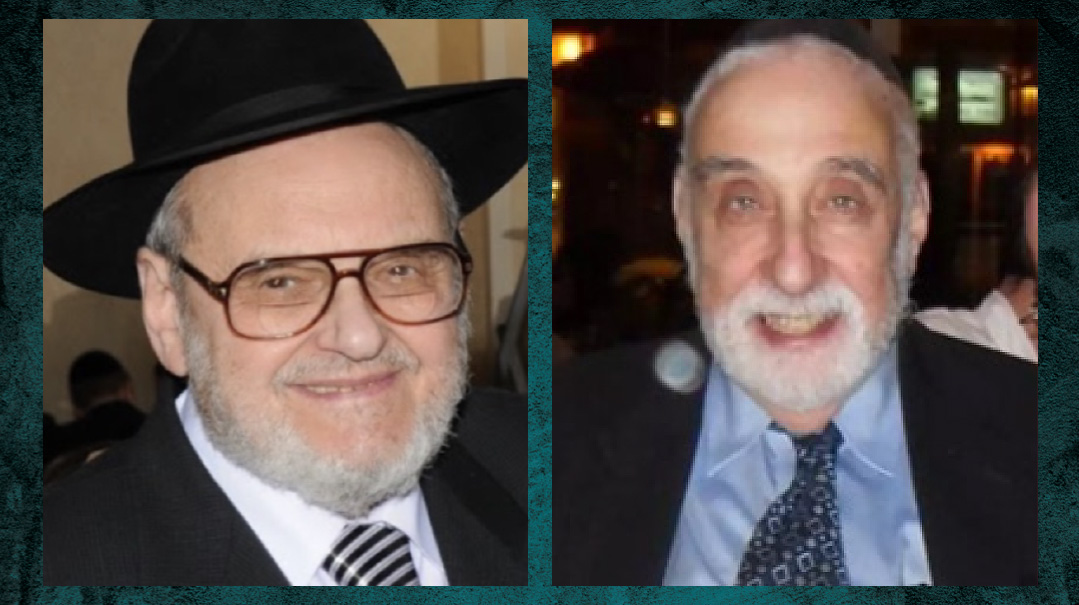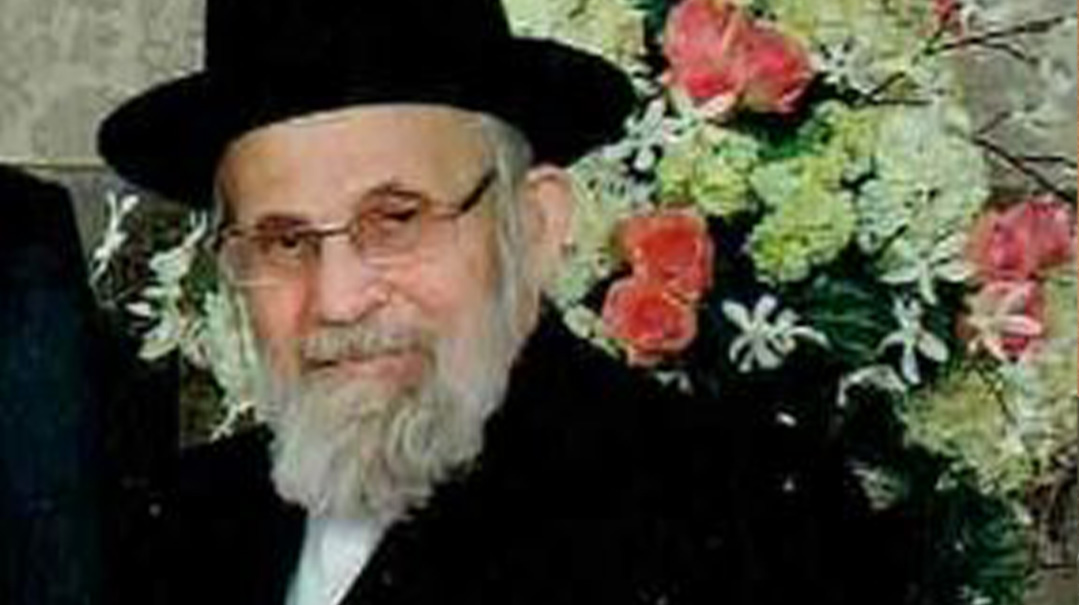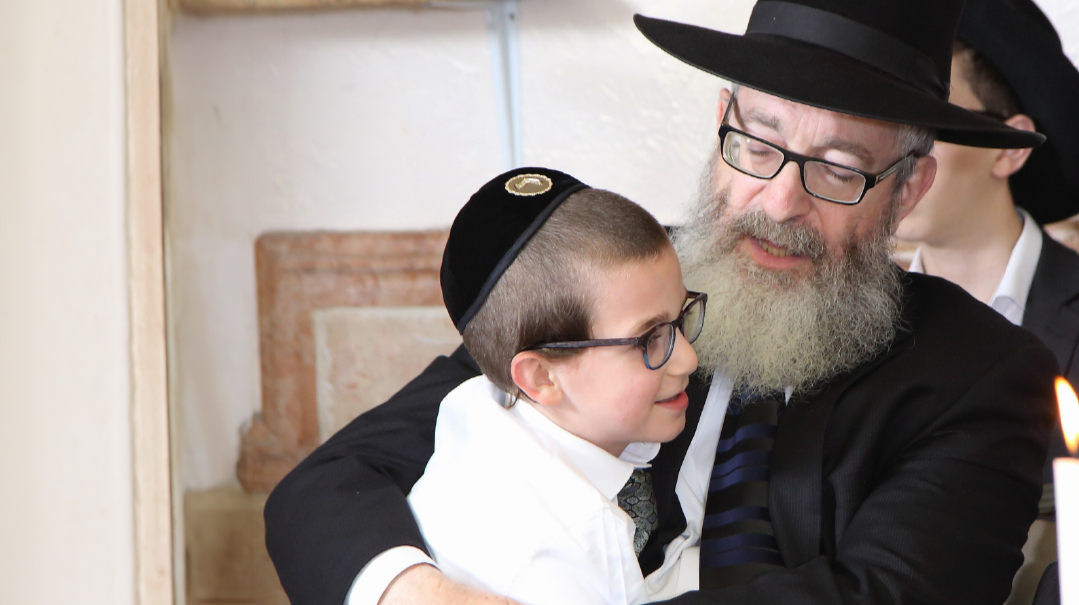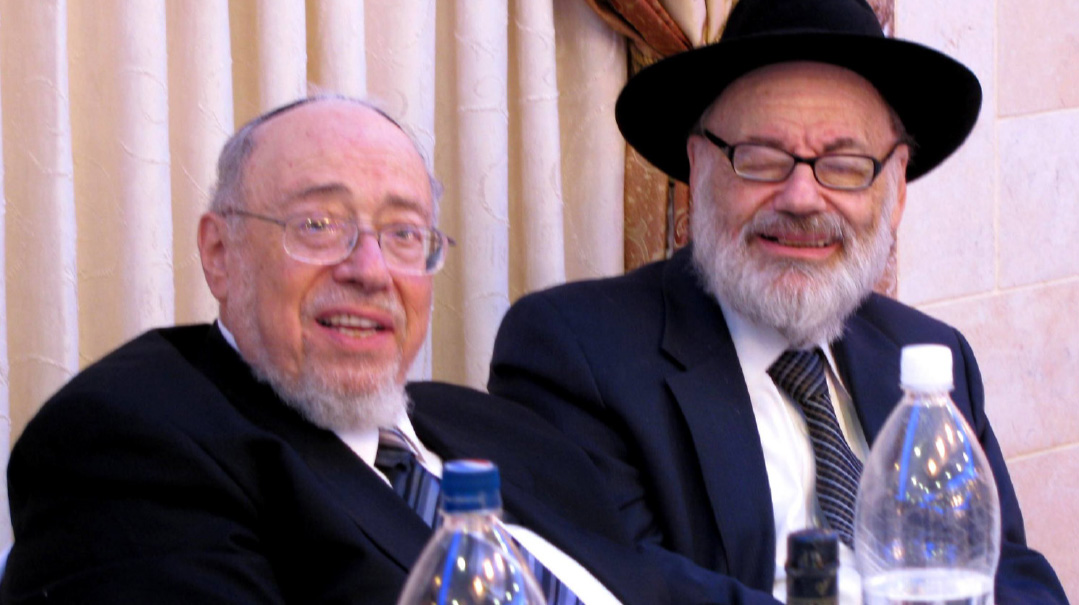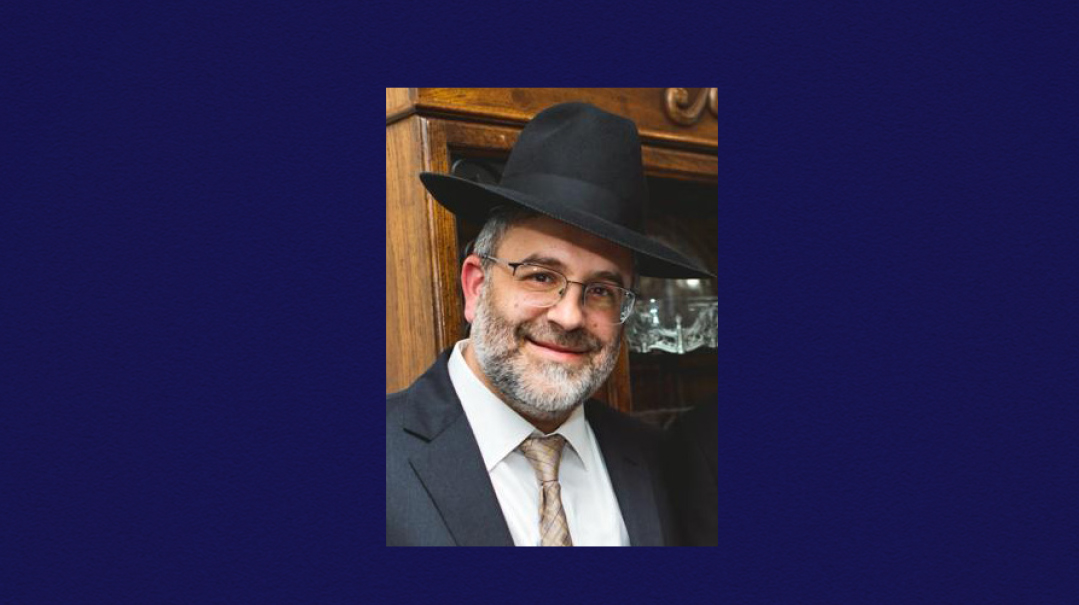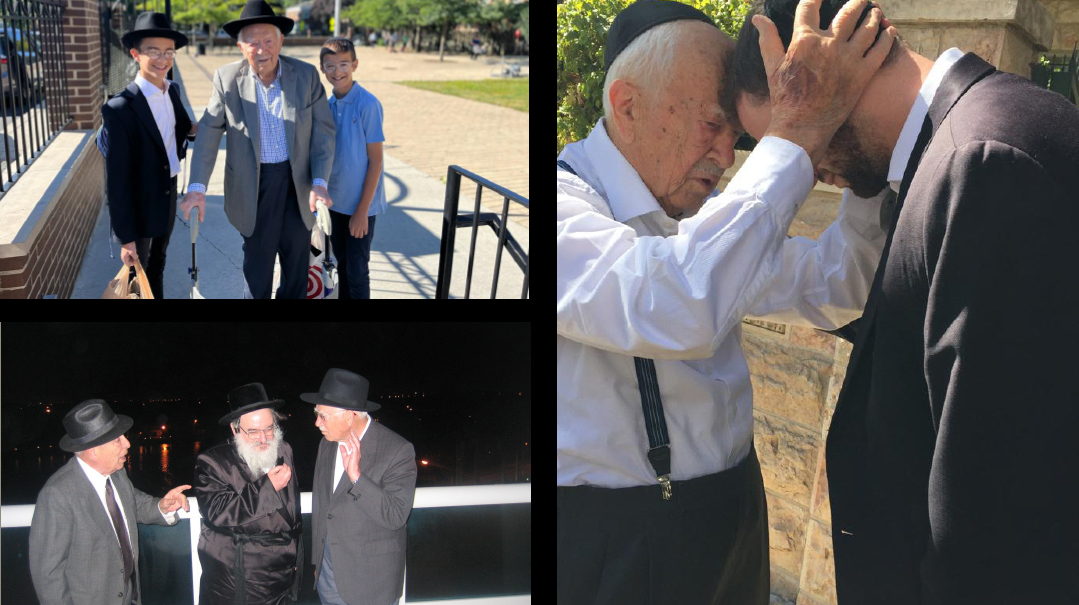The Gentle Warrior of European Jewry: Rav Aba Dunner ztz”l
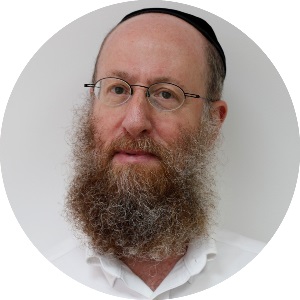
“Okay, you got the funding.” Those words were spoken countless times during the decades that Rabbi Avraham Moshe Dunner ztz”l strived on behalf of European and worldwide Orthodox Jewry. Known simply as “Aba” to those he worked with, including members of the Conference of European Rabbis, where he recently served as executive director, he was loved and respected as a good “Aba” for his unflagging support. But when a fundamental principle of Yiddishkeit was at stake he could also be a fighter, as those who knew Aba Dunner well can attest
T
he founders of Kollel Tiferes Yechezkel in Berlin were devastated. In what was certain to be a major new step in the restoration of Torah Judaism in Berlin, the kollel was on the verge of opening. Then funding promised by one of the original donors failed to materialize at the last moment.
Rabbi Josh Spinner, one of the kollel’s founders, was in New York when he received the bad news, and he started calling several people for advice. The last call he placed was to Aba Dunner, but it might as well have been his first.
“I explained the situation to him and he said to call me back in five minutes,” says Rabbi Spinner. Five minutes later, Rabbi Spinner called back. “Okay, you got the funding,” said Rabbi Dunner.
“I was walking to shul in Central Park and I started crying,” said Rabbi Spinner, who still vividly recalls that early spring morning when this incident occurred. “You call someone for an eitzah and five minutes later he has a solution for you.”
Rav Aba Dunner’s swift intervention in shepherding the affairs of European Jewry will be sorely missed. He passed away last Sunday night in his home in London at the age of seventy-four, after succumbing to a lengthy illness. Born in Koenigsberg (now Kaliningrad) in 1938, Rav Aba was the eldest son of Dayan HaRav Yosef Zvi HaLevi Dunner ztz”l, formerly the rosh beis din of the Union of Orthodox Hebrew Congregations of the United Kingdom.
Rav Aba served the Torah world in many capacities, including as a founder of the Jewish Tribune in London and as a leading askan with the Agudas Israel of the UK. He also served as a councilor in Barnet, London Borough, from the Golders Green ward from 1998 to 2006.
Most recently, he was a major force in Torah Jewry as executive director of the Conference of European Rabbis, a federation of Jewish religious leaders in more than forty European countries that includes all of the continent’s chief rabbis and senior rabbinical judges. The CER also holds consultancy status as an international NGO at the Council of Europe and at European Union institutions.
Rav Aba was at the forefront of the fight against a host of European governments that are attempting to pass anti-shechitah laws (and in some cases succeeding). He was also a bulwark against the rising influence of the reform movement that is trying to erode advances made by Orthodox Judaism, and fought uncompromisingly against any efforts to dilute conversion laws.
At Ease
"Every person you speak to about Aba Dunner will tell you the first thing that comes to mind is that he was a person of na’im halichot [pleasant manners],” said Philip Carmel, the CER’s international relations director. “He was kind and gentle and helpful with everybody, but he always stood on principle. He never compromised over issues of halachah.”
Mr. Carmel, Rav Aba’s closest associate, worked with him on the entire gamut of issues facing European Jewry. They first met at a CER convention in Paris in 2005, where Rav Aba demonstrated how fast he could translate thought into action.
Mr. Carmel, a journalist at the time, asked Rav Aba why the CER did not have an office in Brussels, where most major EU institutions are headquartered. “It was a suggestion I made for their benefit,” said Mr. Carmel. “I had no link with the CER up to that point and I wasn’t suggesting I work for them. He called me back a month later and said we got the funds for the Brussels office, would you like to work there?”
Mr. Carmel accepted on the spot and it didn’t take long for him to appreciate Aba Dunner the man, in addition to Aba Dunner the boss.
“I will tell you a story which I think exemplifies Aba,” said Mr. Carmel. “He invited me to attend a rabbinical conference in Florence, Italy. The meeting was held in the main shul in Florence. There were a lot of very important rabbanim there and everyone knew Aba. He was obviously the center of attraction and everyone wanted to get his advice and speak to him. Aba saw a couple of tourists — a young, tall couple — in the shul. He saw that the woman was a Jew and the man wasn’t. He spent the next hour and a half just concentrating on this one woman, to save her nefesh. However important he was within the Jewish world, and however important the rabbanim were, the most important thing for him was to save this one Jewish girl. I was stunned by this. I know that this woman, in the end, married a Jew in America. It was probably the first time that she had ever talked to a rabbi, and he changed her life. He saved her.”
On another occasion in Italy, Mr. Carmel accompanied Rav Aba to a meeting with Prime Minister Silvio Berlusconi. “Within five minutes he was joking around with him, and they were talking as if they had been friends for years,” said Mr. Carmel. “It was like this with every politician. He had a very informal way about him. Nevertheless, there was never a discussion with no purpose. The politician was always made to feel completely at ease, and the issue was always raised, and we always came away from the meeting with results.”
West Meets East
J
ust twenty years ago, right around the time that Aba Dunner was entering his prime, half of Europe was still sealed behind the Iron Curtain. After the disolution of the Soviet Union, Jews regained their personal freedoms, including the opportunity to practice Judaism without fear of persecution. But three generations of iron-fisted Communist rule had left the Torah world in shambles.
Rav Aba was instrumental in recruiting rabbis to serve in Eastern European Jewish communities, raising the funds and resources needed to sustain them, maintaining strong follow-up contact, and linking them to others who could be of service to their communities.
One of those rabbis was Rabbi Kotel Dadon, named chief rabbi of Croatia in 1998, some seven years after Croatia gained its independence from Yugoslavia. Rabbi Dadon’s kehillah is located in Zagreb, Croatia’s capital. After seven years of service as the chief rabbi, a few members of the community tried to bring in a reform rabbi. Rav Aba intervened, using a combination of the carrot and the stick.
He wrote letters to Croatia’s president and prime minister, making them aware of the intrusion and its consequences for the Jewish community. At the same time, he made it abundantly clear to the community itself how the CER had supported it in the past, and what it might mean to them if they would have to go it alone without CER recognition. He even issued a boycott against the community leaders, unless they relented.
At the end of the day, the city still has a thriving Jewish religious community named the“Bet Israel Jewish Community of Croatia,” while the reform movement made no headway and its threat was stifled.
Rav Aba’s intervention in Croatia was his modus operandi. He kept constant two-way communication with rabbanim and community leaders throughout Europe, day and night. If necessary, Rav Aba would pick up the phone to give chizuk to any Orthodox rabbi facing a challenge to his community, or to a head of state to ensure that the Orthodox kehillah would receive that leader’s backing on an issue. Any attempt to breach the daled amos of halachah was met head-on.
“I saw many places in Eastern Europe where the communities are weak, where Aba was able to persuade community heads who were completely chiloni to adopt principles that were completely chareidi and that were completely out of character for them,” said Mr. Carmel. “Quite often, when you go to these places, the kehillos see you as a threat, but Aba was never seen as a threat. He was always seen as a help.”
In Central and Eastern Europe, residents as well as tourists now find hotels and restaurants with a high standard of kashrus, also thanks to Rav Aba’s insistence on standardizing procedures. Even if the local community did not demand such high standards, they accepted them.
“That’s extremely rare because generally kashrus standards are defined by the people who eat the food, but that wasn’t the case here at all,” said Mr. Carmel. “Aba came in from the outside and asserted what the standard would be. The rabbanim knew that by being part of the family of the CER, there would be somebody attentive to their needs at all times.”
Life Service
F
or the last five years of his life, Rav Aba had to wage a battle for his own life, in addition to the skirmishes he was fighting on behalf of Yiddishkeit in Europe.
Despite his own personal battle, and the deaths of many close family members within a relatively short period of time, nothing could break his firm backbone.
Dayan Yisroel Yaakov Lichtenstein, rosh beis din of the Federation of Synagogues in London, davened with Rav Aba for the last twenty years at the Sassover Beis Medrash. “Even though he was very ill, I was quite impressed that he went to Japan, at this stage of his life, to try and get kosher food for the boys [imprisoned there],” said Dayan Lichtenstein.
Dayan Lichtenstein perceived this same dedication to a cause while observing the manner in which Rav Aba honored his father, Dayan Harav Yosef Dunner, in his later years. Although they lived in different neighborhoods, Rav Aba would always attend Yom Kippur davening in his father’s shul, Adath Yisroel.
“We are not talking about a little boy of fifteen. He was a grown man and a grandfather himself,” said Dayan Lichtenstein. “I asked him once why he did this, and he told me that it just wouldn’t be Yom Kippur without davening with his father.”
Some four months ago, Rav Aba changed the venue of a scheduled CER standing committee meeting to Berlin, in a show of support for the Hildesheimer Rabbinical Seminary in their struggle against discriminatory funding practices by the German government. Part of the reason why this was so meaningful to Rav Aba is because of his father, who was perhaps the last rabbi to receive his smichah from Hildesheimer’s prewar forerunner, the Berlin Rabbinical Seminary.
“He was extremely ill by that time,” said Mr. Carmel, “but he would not miss a standing committee meeting. He came to give chizuk to all the rabbanim, and not only to give them chizuk, but to make sure that they didn’t waver on any principle. Even if he was going to have to take a slight backward step because he was so ill, he wanted them to know what their values were and they respected him for that.”
“To watch Rav Aba at work was all that one needed to learn what Klal Yisrael needs,” said Mr. Carmel. “He may have been working for a rabbinical organization in Europe but he saw his role as helping every individual Jew in the world, no matter where they were and no matter what their affiliation.
“He always said that every single thing he had ever done in his life was linked to kiruv and that all of his sons worked in kiruv. He saw the CER as first and foremost a kiruv organization. The organization wasn’t there to serve rabbanim; it was there to serve Yiddishkeit and to serve Jews.”
Sources close to the CER tell Mishpacha that professionally oriented structural changes over the last few years have ensured that there are sufficient leadership positions, including an executive committee, to ensure continuity. But it will not be easy to fill Rav Aba Dunner’s shoes.
“I had the sense on a number of occasions that the reason he fought to remain active, despite his illness, was because he sensed he hadn’t finished his mission,” says Rabbi Spinner. “He would say, ‘I’m not going anywhere, I’ve got things to do.’$$$SEPARATE QUOTES$$$”
The mission may not be over, but those who will soon step forward to carry on his various campaigns will clearly benefit from the long-term strategy that Rav Aba Dunner set in place and the relationships that he developed and nurtured.
The Third Time With Tears
—Yisroel Besser
T
here was a comment that Reb Aba Dunner made that defined him, sort of a mission statement. He was discussing the fate of tens of thousands of destroyed kvarim across Eastern Europe, and he said “when I got involved with cemeteries, my father, the rov, told me 'Aba, it doesn't make a difference if it's the kever of Reb Yisroel Salanter, Rebbe Elimelech of Lizhensk, or a simple shammas- every Yid has a right to same kovod.”
It was a revealing statement because it explains the success that Reb Aba had in all his great works, the way he maintained the human touch even as he became ever more prominent- individuals were no different than communities, his efforts for the lone rabbi battling it out in a decrepit Ukrainian hamlet were no less intense than high-profile diplomatic negotiations in the halls of power.
Every Yid has the same right.
Sometimes, as people become ever more accomplished, they lose a certain facet of their personalities, become more human in front of the cameras and lights and less so in private: with him, the opposite was true. As much as he could hold a crowd of thousands mesmerized- and did, always for good causes- he related to the yachid with the same warmth, optimism and grace.
Just a few months ago, he came to my hometown of Montreal to serve as guest speaker at a dinner benefiting the Yaldei Developmental Center. He scheduled his stay in Montreal for several days, hoping to use the time to raise funds for the Conference of European Rabbis. He never got around to fund-raising.
First, he insisted on visiting Yaldei in order to see first-hand the extraordinary work they do with developmentally-delayed children: after all, his speeches were no mere soundbites, this was no politician looking appropriately sympathetic. He wanted to see the kids, touch them, speak to them- then he would give over their message. It was real.
Then, in the aftermath of his speech, in which he openly referred to several personal nisyonos, people lined up to draw from his reservoir of emunah, eager to hear the secret of how someone who had sustained so much loss could be so upbeat.
So instead of raising funds, he used his time to raise spirits.
He once told me the secret: he said that after the loss of his wife and then his son, when he himself was unwell, the Sassover Rov in London had suggested that he 'adopt' a bracha, making it his own. He chose the bracha of 'Hanosein l'yaef koach, Who Gives Strength to the Weary' saying it several times a day. 'Whenever I start to feel overwhelmed,' he told me, “I stand up and say the bracha, re-energizing myself.”
Yes, he was a 'ya'eif', weary, but we didn't see that: we only saw the koach.
I didn't know him as well as I would have liked to, but considered him a dear friend nonetheless. I think he was that way with everyone, remembering what was important to them, rejoicing in their successes and feeling with them in their struggles.
Another thing: he never grew cynical, despite the fact that his position thrust him into organizational politics, forcing him to mediate between people and institutions. He was humble, happy and hard-working.
Spending time with him was sheer joy- after profiling him two years ago, a few months ago, the opportunity to do another feature arose. I jumped at the chance.
Twice I met him and wrote about him amidst laughter- this, the third time, it's amidst tears.
(Originally featured in Mishpacha Issue 369)
Oops! We could not locate your form.

